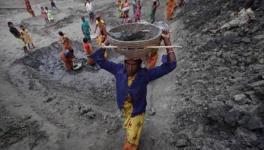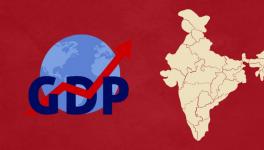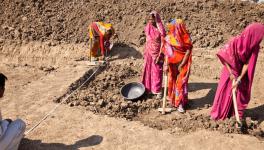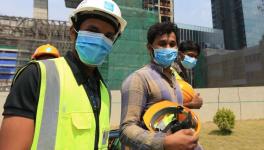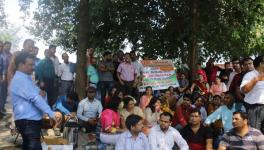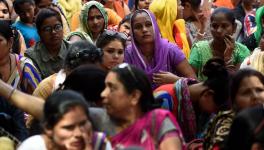EPFO Data Records 10% Fewer Fresh Formal Jobs Created in April-August 2023
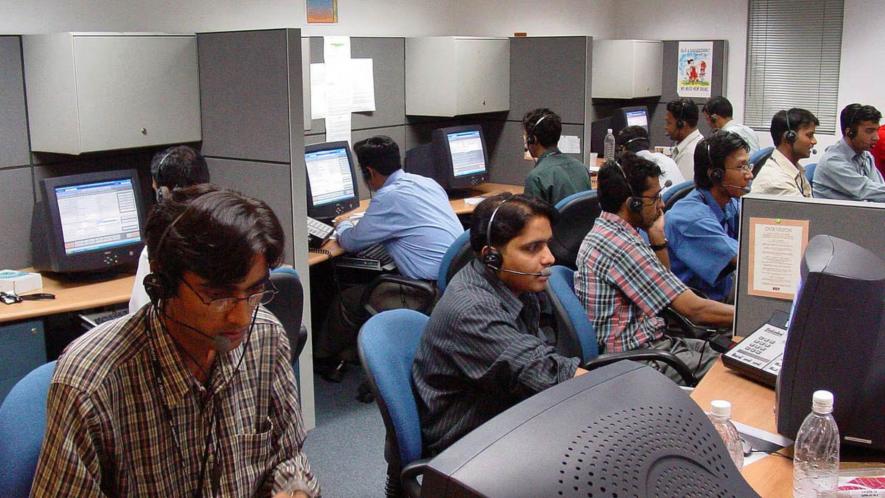
Representation Image
While the country’s overall unemployment rate is falling, the quality of employment seems to have taken a serious hit, states an analysis of this data published by the newspaper on October 25.
The pace of formalisation has slackened in the five months of the current financial year (April-August) with more than half a million fewer formal jobs created in the period compared to the same period last year, according to data from the Employees’ Provident Fund Organisation (EPFO).
This payroll data showed that cumulatively 4.92 million new subscribers joined the social security organisation between April-August this year, compared to 5.51 million subscribers in the same period in the previous year, reflecting a 10.7 per cent decline in the number of new payrolls created.
Santosh Mehrotra who is a visiting professor at the University of Bath, noted that the labour markets are yet to recover as the pace of formal job creation is quite low and not keeping pace with the rising labour force, leading to an increase in self-employment or engaging in agriculture, particularly for the young and women.
Only recently, the annual periodic labour force survey (PLFS) released by the National Statistical Office (NSO) showed that the unemployment rate had dropped to a six-year low of 3.2 per cent in the July-June 2022-23 period from 4.1 per cent in the July-June 2021-22 period. Similarly, the labour force participation rate had also increased to 57.9 per cent from 55.2 per cent in the corresponding period.
“The recent PLFS data shows an increase in the share of people engaged in agriculture and a fall in the people engaged in manufacturing,” Mehrotra detailed. He also stated that the decline in formal employment and the corresponding increase in labour force participation shows that more people are joining the labour markets and the economy isn’t able to generate enough decent jobs for them.
The PLFS survey has also shown that the numbers of people engaged in agriculture has increased sharply to 45.8 per cent in the 2022-23 period from 45.5 per cent in the 2021-22 period while the share of people engaged in manufacturing has gone down to 11.4 per cent from 11.6 per cent in the same period.
However, labour economist KR Shyam Sundar said that the EPFO data does not reflect employment generation, and the subscribers are only a minuscule proportion of the labour force in the country. “EPFO data only shows the extent of formalisation of the workforce, which in turn means as many people will be getting social security benefits. If there is a slowdown [in this] as well, that is a matter of concern,” Sundar added.
Stark disparities in India’s labour force based on gender, caste and religion
Only three weeks ago, September 29, The Wire had reported “New Report Reveals Stark Disparities in India’s Labour Market Based on Caste, Gender, and Religion”. Authored by Deepanshu Mohan, Aditi Desai and Amisha Singh the study undertaken by the members of InfoSphere team of Centre for New Economics Studies, O.P. Jindal Global University (work can be viewed here.). The study revealed that “the largest earnings gap is based on gender, with women reporting earnings at only 40% of those of men in self-employment, followed by 64% of men in casual wage jobs, and 76% of men in regular wage jobs.”
The report found “that regular wage or salaried work tends to be the most remunerative, followed by self-employment and then casual wage work. Further, within each type of employment, significant heterogeneity exists in occupation, industry, and other job characteristics, all of which play a crucial role in determining labour earnings. The report also found that significant earnings gaps exist in terms of gender, caste and religion among different social groups.
Excerpts from The Wire report:
The largest earnings gap is based on gender, with women reporting earnings at only 40% of those of men in self-employment, followed by 64% of men in casual wage jobs, and 76% of men in regular wage jobs.
The gaps based on caste and religion are narrower but still significant. Muslims receive higher pay than Hindus in the category of casual wage labour but lower pay in terms of regular wage jobs and self-employment. There is a noticeable difference in earnings between SC/ST and other castes. The report also showed that religion and gender-based pay gaps move in the opposite direction. Women at the upper end of the income distribution are less disadvantaged than men. However, Muslim workers at the upper end of the income distribution are more disadvantaged as compared to Hindu workers.
At the top decile Muslim workers earn 75% of what Hindu workers earn. For the third and fourth decile, this number is much higher at around 94%, indicating that Muslim salaried workers earn almost as much as Hindu salaried workers at the lower end of the earnings distribution. Conversely, women at the bottom of the income distribution only earn 40% of what men earn but at the top decile the number is 93%.
The increasing Hindu-Muslim gap for higher-paid workers is a matter of significant concern. The over-representation of women in the waste management and sewerage sector has decreased, nevertheless, from an index value of 2.4 in 1983 to 1.2 in 2021, which is a positive development. Caste-based industrial segregation between SC/ST and others, including OBCs, remained constant at a Duncan index value of 0.23 in 1983 and 2021, with marginal changes in the years in between.
The people from the Scheduled Caste community have remained consistently over-represented in waste-management and sewerage and manufacture of leather and leather products. These two industries have strong historical ties with their caste identities. However, the extent of over-representation has declined substantially. In the case of the leather industry, the representation index declined from 4.6 in 1983 to 1.4 in 2021.
In case of waste management and sewerage, over-representation of SCs decreased from over five times their workforce share in 1983 to 1.6 times in 2011, with the largest drop occurring between 2004 and 2011, which was also the high growth period. However, in 2017, it increased to 2.1 and has remained above twice their workforce share in 2021.
The industrial segregation between Muslims and Hindus is relatively less-pronounced than gender and caste-based segregation and it has also declined over time. The segregation index declined from a peak of 0.22 in 1993 to 0.17 in 2021. Among industries in which Muslims are consistently over-represented since 1983, their over-representation was the highest in the manufacture of tobacco, garments, and textiles in 2021.
The entire report may be read here.
Get the latest reports & analysis with people's perspective on Protests, movements & deep analytical videos, discussions of the current affairs in your Telegram app. Subscribe to NewsClick's Telegram channel & get Real-Time updates on stories, as they get published on our website.











